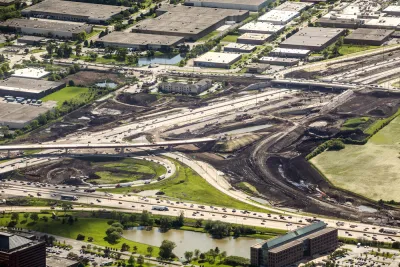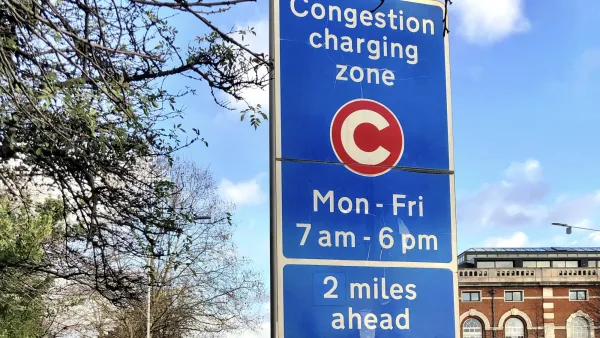When the public learns that freeway pollution discriminates against nearby residents with devastating health consequences, the tide of public opinion will finally turn against the automobile—a call to action by Bill Adams.

(Updated 02/04/2016) UFP (ultrafine particulate) air pollution effects people living, working, or going to school near freeways, with devastating consequences. However, there is little public understanding of the difference between UFP and ozone pollution, i.e., smog, writes UrbDeZine editor Bill Adams. In a prior article, he detailed the scientific findings about UFP pollution, including:
- Heart disease, lung function impairment, leukemia, asthma, and lung cancer, are some of the conditions that have been associated with UFP exposure
- The UFP high danger zone is the area roughly within 1,000 - 1,500 feet of either side of a high-traffic roadway, with variations due to topography, wind direction, and other factors.
- UFP substantially stunts lung development in children living within 500 meters of busy roadways compared to those living more than 1,500 meters away.
- 6 million school children are exposed to dangerous levels of UFP because of the location of their schools.
- Low income and minority communities are disproportionately impacted by UFPs.
However, as evidence accumulates, public understanding will grow, predicts Adams:
"When people view highways as rivers of toxic air importing disease and death into nearby neighborhoods, rather than as simply regional polluters, resistance to road projects and demand for protection from existing highways will dramatically increase. The cost of road projects and mitigation, including mitigation of emissions from existing highways, will dramatically increase, making transit projects more cost effective."
The effect on property values and profits within these highway pollution zones may be an even greater agent of change, writes Adams. He goes on to urge readers to get the word out to save lives and improve the built environment.
[The headline of this post was updated to reflect the correct usage of scientific terms.]
FULL STORY: Could this little-known pollutant finally change our transportation priorities?

Analysis: Cybertruck Fatality Rate Far Exceeds That of Ford Pinto
The Tesla Cybertruck was recalled seven times last year.

National Parks Layoffs Will Cause Communities to Lose Billions
Thousands of essential park workers were laid off this week, just before the busy spring break season.

Retro-silient?: America’s First “Eco-burb,” The Woodlands Turns 50
A master-planned community north of Houston offers lessons on green infrastructure and resilient design, but falls short of its founder’s lofty affordability and walkability goals.

Test News Post 1
This is a summary

Analysis: Cybertruck Fatality Rate Far Exceeds That of Ford Pinto
The Tesla Cybertruck was recalled seven times last year.

Test News Headline 46
Test for the image on the front page.
Urban Design for Planners 1: Software Tools
This six-course series explores essential urban design concepts using open source software and equips planners with the tools they need to participate fully in the urban design process.
Planning for Universal Design
Learn the tools for implementing Universal Design in planning regulations.
EMC Planning Group, Inc.
Planetizen
Planetizen
Mpact (formerly Rail~Volution)
Great Falls Development Authority, Inc.
HUDs Office of Policy Development and Research
NYU Wagner Graduate School of Public Service


























